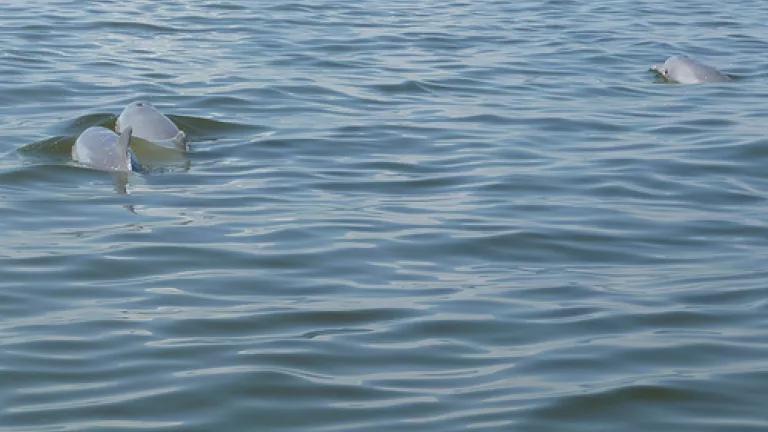
By now about 80 bottlenose dolphins, half of them newborns and stillbirths, have washed ashore in the northern Gulf of Mexico since this year’s calving season began. One TV station filmed a response team taking tissue samples from a stranded baby – a gut-wrenching scene that is being repeated, as my colleague Rocky noted, across beaches in Mississippi and Alabama. The federal government has held at least one press conference, and the story has spread well beyond the region to national and foreign media. What everyone rightly wants to know, of course, is whether BP is responsible.
Yet the investigation remains in its early stages. Marine mammal stranding networks in the United States are coordinated, not centralized, and NOAA is spending much of its time trying to secure the bodies, create freezer space, and ensure that samples are properly taken. A few organizations, such as the Institute for Marine Mammal Studies in Gulfport, Mississippi, have begun to perform necropsies on recovered bodies; still, most of the detailed lab work needed to probe the Deepwater Horizon connection is weeks or months away.
Here are a few questions (aside from the obvious one) that we should be asking.
(1) Will the government be able to determine the cause of death? Biologists have developed reasonably good tests for certain pathogens, like some of the brevotoxins associated with red tides, but oil is a tougher case. Many of the standard assays are good at detecting acute toxicity, but not so swift at picking up the molecules of hydrocarbons and other matter that oil weathers into. Gestational problems can be even harder to understand. And investigators aren’t exactly helped in this case by the poor condition that most of the bodies are in. Whether they’ve been carried along by currents or left undiscovered on a beach, the dolphins are now in a state that NOAA biologists describe as “Code 4” decomposition, meaning their tissues and organs are too broken down for many of the available tests.
If the BP spill is responsible, drawing a link could well depend on other types of research, such as comparative studies of exposed and unexposed populations, which could take years. For now, NOAA may make more progress in ruling out other causes than in ruling oil in. And that’s important, too.
(2) Which dolphins are dying? As I’ve mentioned before, the Gulf’s bottlenose dolphins don’t all belong to a single, solitary group. Biologists divide them into offshore, coastal, and near-coastal populations, which do not mate with one another and are genetically distinct. What’s more, the near-coastal population breaks down further into dozens of dolphin communities that have made their homes in the bays, sounds, and estuaries of the Gulf’s winding shore. Some of these communities are exceedingly small, no more than a few dozen animals, and none are much larger than a thousand. On these tiny, semi-isolated groups – the dolphin equivalent of a remote village – the death of even a few babies could have outsized effects.
We have enough baseline genetic data to identify stranded dolphins down to the population and possibly even the community, depending on where they’re from. Investigators haven’t yet done this work, but it should be an absolute priority given what it could tell us about the cause of the die-off and the welfare of dolphin communities.
(3) Are dolphins declining in the Gulf? This is the other big question. Biologists assume that, during a die-off, the bodies they see on shore represent only the tip of an iceberg, and that many other animals perish at sea or are never discovered or reported. Whatever has killed the stranded dolphins over the last two months is also driving up the mortality rate in dolphin populations in at least some parts of the Gulf. Understanding how these populations are coping with this latest die-off, and with the spill more generally, will take years of research: aerial or boat surveys, to better estimate their numbers; photo-identification work, to track the coastal communities over time; and the kinds of comparative studies that were used after the Exxon Valdez to assess that spill’s impact on sea otter populations in Prince William Sound.
For the moment, biologists have some of the funding they need through the government’s Natural Resource Damage Assessment, a process established under the Oil Pollution Act of 1990 to determine the liability of oil companies after major spills. But whether that research will continue beyond the year or two of initial assessment remains to be seen. The Deepwater Horizon disaster made additional research and protection imperative for marine mammal populations in the Gulf. Committing to conserve them over the long run seems even more important now.
